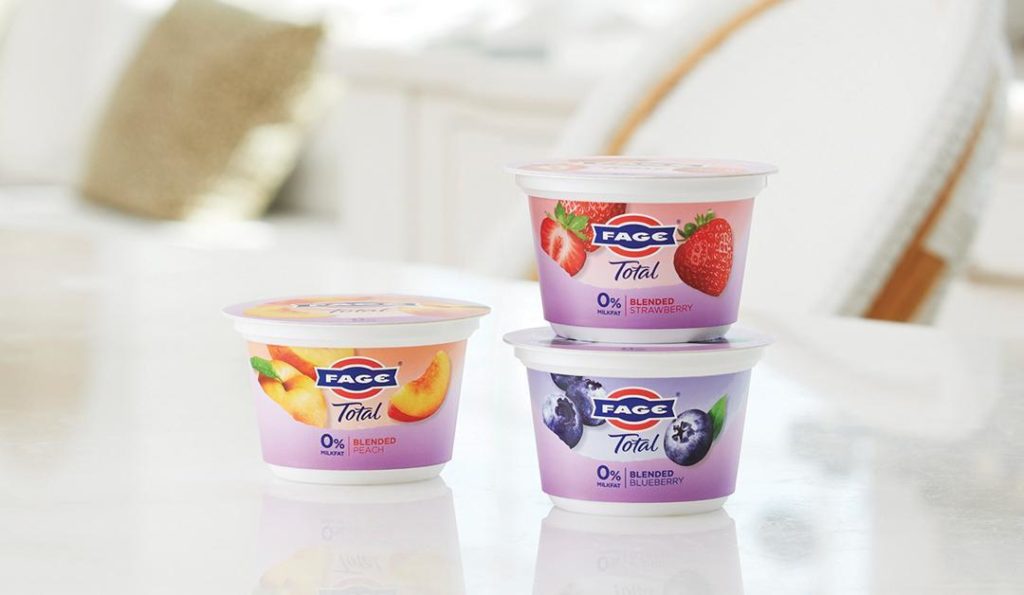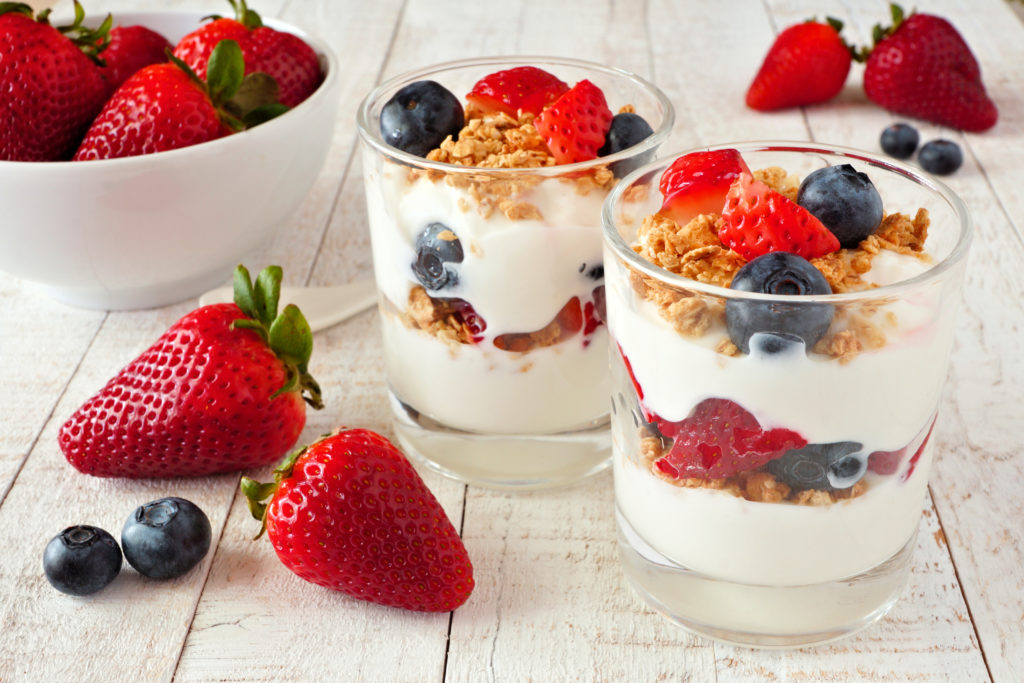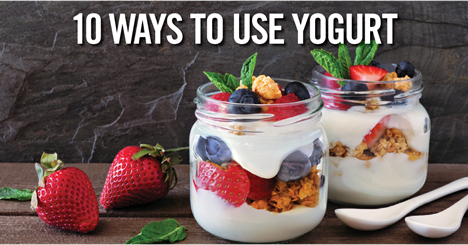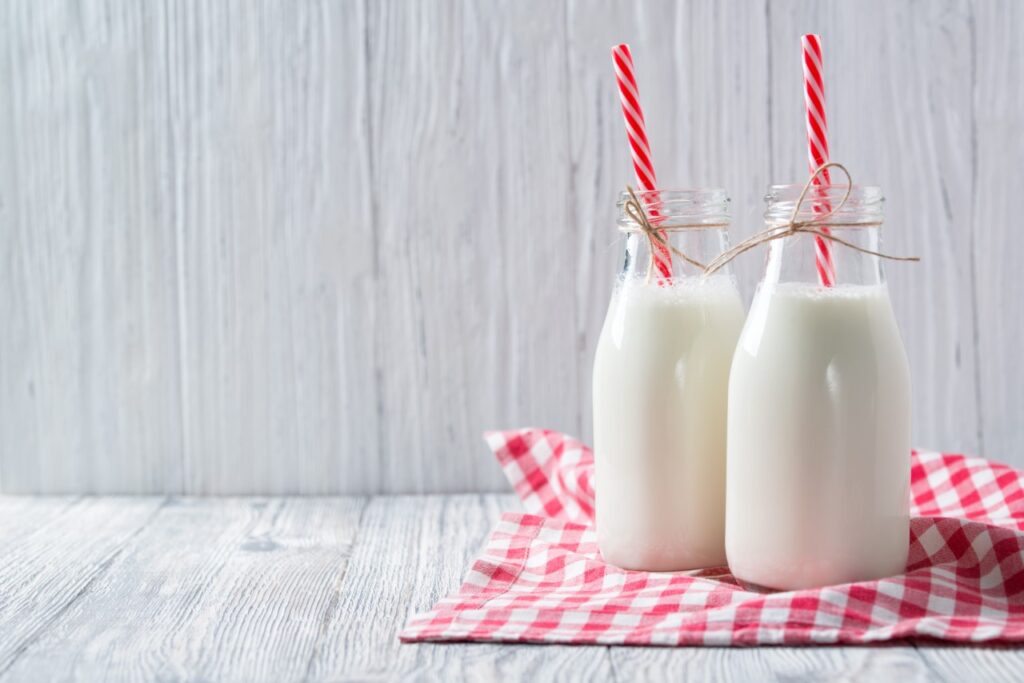
Dairy Delivers Sustainable Nutrition
Ellie Wilson
MS, RDN Manager of Lifestyles and Wellness
June is National Dairy Month! My Facebook memories are showing me pictures of many visits to dairy farms across New York State, where I learned about the ways dairy farmers are innovating in animal care, land and water management. The dairy industry has sustainability built into its DNA – farmers are diligent about managing their family farms from generation to generation. They’re always looking for smarter ways to do work, such as using technology, like cow exercise trackers to monitor health, and milk tank temperature systems that text the farmer if the temperature changes. The result of this good stewardship and passionate care is a nutritionally amazing product that delivers sustainable nutrition. This definition is really about the ongoing science-based pursuit of providing affordable, accessible, nutrient rich foods that can nourish the world’s growing population, while also protecting environmental resources now and for future generations.
The foundation of dairy sustainability is the biology of cows themselves. Dairy cows have 4 stomachs, which means they can eat a wide range of foods/plants other animals cannot eat and produce a nutrient rich product. They also produce manure, which is regulated and managed in multiple ways – for example, many farms have digesters that extract liquid and gas from manure, turning that into fertilizer for farm fields and energy for the farm and community. The fertilizer supports grass and cover crops that protect topsoil. Cows are also up cyclers of food waste – citrus pulp, almond hulls, leftover pumpkins and fruits and vegetables are all on the menu, reducing food waste and bringing nutrition benefit back to the food system.
Water is a valuable resource on dairy farms. It is recycled several times as drinking water for cows, to cool them when it’s hot, wash farm equipment and clean the barn floor. After cleaning barns, nutrient rich water can be collected and used to fertilize fields. Data tells the sustainability story best – research shows the amount of water needed to produce a gallon of milk declined 30% over a 10-year period. Overall, the dairy community has reduced the carbon footprint of milk by 63% over a recent 10-year period due to improvements in animal health, cow comfort and farm management practice. Looking ahead, they have committed to an ambitious net zero carbon emissions by 2050. Climate change mitigation is evident in how they produce the same amount of food using fewer resources but still providing great nutrients and great flavor – the 13- nutrient package that is milk and all the things we can make from it is a fantastic result of a constantly improved process. America’s dairy farmers have set aggressive new environmental sustainability goals to achieve greenhouse gas neutral neutrality, optimize water uses and improve water quality.
Dairy farm families have a long-term investment in environmental care. That torch is passed from generation to generation. I have met many of these families and could only be impressed by the dedication to their work. Cows are the center of the dairy farm and caring for them is a passion and a priority, 365 days a year. You and your family are part of the sustainable nutrition cycle and benefit as well – one of the best ways to add nutrition value to any meal or snack is to enjoy a glass of milk or add fun to any afternoon with a bowl of ice cream! Take a virtual tour of a dairy farm and learn more about where delicious dairy comes from!

New Items: FAGE® Total Blend Yogurt
NEW FAGE® Total Blended Greek yogurt is hitting our dairy aisle shelves! Real fruit blended with FAGE Total’s nonfat Greek yogurt. Taste the rich, creamy perfection of beautifully balanced Greek yogurt.
Available at your local store in 5.3oz size, FAGE Total Blended yogurt contains 100% natural ingredients and is Non-GMO Project Verified. Kissed with fruit, blended to velvety goodness, and packed with protein – enjoy it by the spoonful right out of the container, or in a parfait with fresh fruit and granola.
Not only is this exciting new yogurt tasty, it’s also made right here in the Northeast! FAGE yogurt is produced in Upstate New York, near our Johnstown Price Chopper. When it’s made or grown here, we get it here!
Shop these newbies and more new items here!


10 Ways to Use Yogurt
Do you need to use that tub of yogurt in the fridge? But out of ideas on how to make it work. Don’t worry, we’ve got 10 ways to use yogurt. Yogurt can be a healthier replacement to mayo, sour cream, and more. Check out our list!
Create Creamy Marinara Sauce: Add a few scoops of plain yogurt to marinara sauce for a creamier texture and more protein.
Stuff Your Vegetables: Yogurt can make for a smooth filling to stuffed vegetables, add some couscous for a delicious combination.
Smooth Salad Dressing: Out of salad dressing, no worries. Use yogurt! It tastes great and can be used a healthier alternative.
Herb-Yogurt Sauce: Check out these Squash-Quinoa Cakes topped with tasty Herb-Yogurt Sauce. It also works great with this Harissa Cedar Plank Salmon.
Yogurt-Scallion Dip: Yogurt can also be used as a mouthwatering wing dip. It works great in this Tikka Masala Wings with Yogurt-Scallion Dip!
Refreshing Smoothies: Yogurt is perfect for adding a creamy element to your smoothies. Try it with this recipe for Strawberry Orange Smoothie.
Marinate Chicken: Yogurt makes for a great chicken marinade. Lactic acid in the yogurt helps to tenderize the chicken. This method is popular in Indian cuisine.
Greek Burger Topping: Lamb burgers are great. But rather than using your standards condiments use yogurt with cucumber and cumin relish for a tasty dish.
Substitute for Sour Cream: Yogurt is excellent on tacos as a replacement for sour cream. Try it and see for yourself.
Skip the Mayo: If you’re not a fan of mayonnaise, yogurt is the answer. It’s a healthy and tasty replacement that’s great in tuna, potato salad, and chicken salad.
As the weather begins to turn and we reach the spring season there is plenty of opportunity to enjoy yogurt this time of year. Give any of these tips a try or stick to some of your own ideas. Either way don’t forget to stop by your local store or visit us online for all your yogurt needs.

Dairy Does More
Ellie Wilson
MS, RDN, CDN, Manager, Lifestyles and Wellnes
June is Dairy Month! At Price Chopper and Market 32, we celebrate the many ways dairy foods bring flavor and fun to our favorite foods, and essential nutrients to cup and plate to help us grow and thrive. Dairy farmers and processors throughout the states we serve work so hard to bring delicious, sustainable and economically important dairy foods to our stores and communities – we are glad to partner with them for PICS products and community food and nutrition security programs.
So, what is so good about dairy? Begin at the beginning – with milk! Milk provides 13 essential nutrients, including calcium, phosphorus, vitamin A, vitamin D (in fortified products), riboflavin, vitamin B12, protein, potassium, zinc, pantothenic acid, niacin, iodine and selenium. The term “essential” has a specific meaning when we talk about nutrition – it means we need to get these nutrients from foods. Our bodies can make some nutrients, like Vitamin D is made in skin when exposed to sunshine, but not quite enough to meet health needs – that is part of why Vitamin D is fortified in dairy products. Adults and children in America are not getting enough dairy, fruits or vegetables, calcium, potassium, Vitamin D or fiber – just one or two more servings of milk per day can close some nutrient gaps and support overall better nutrition. Check out the 2020 Advisory Committee Report.
Dairy foods are so diverse, and ongoing research shows that diversity may be key when it comes to how dairy components and nutrients impact health. The April 2021 Tufts Nutrition Newsletter highlighted some of the research showing how different dairy foods deliver benefits. Bottom line? Focus on low-fat and fat-free dairy to manage saturated fat, and power-pair appetizing low-fat dairy foods with fruits, vegetables, whole grains, nuts and legumes to energize eating well. Check out these dairy + plant power-pair ideas for some inspiration!
Dairy farmers, like grocery store workers, have been essential to ensuring fresh milk and dairy foods have been available to shoppers and food insecurity programs throughout the country during this challenging year. Shoppers can partner with Price Chopper and Market 32 to support ongoing efforts in New York and Pennsylvania to be sure families have better access to milk and other nutritious foods by rounding up change at the register during May and June to “Fill a Glass with Hope and a Plate with Promise”. Milk is the most requested item at food pantries and the least donated – each $5 donated equals ½ gallon of milk, or eight glasses of milk! The need has never been greater, it is a great investment in community health. Make June your month to power up delicious dairy and reap the benefits!
Fresh cherries and yogurt – Yum! Chilled Cherry Dessert
Peaches are in season – Brown Sugar Peach Parfait
Great grilling! Grilled Fruit Pizza


